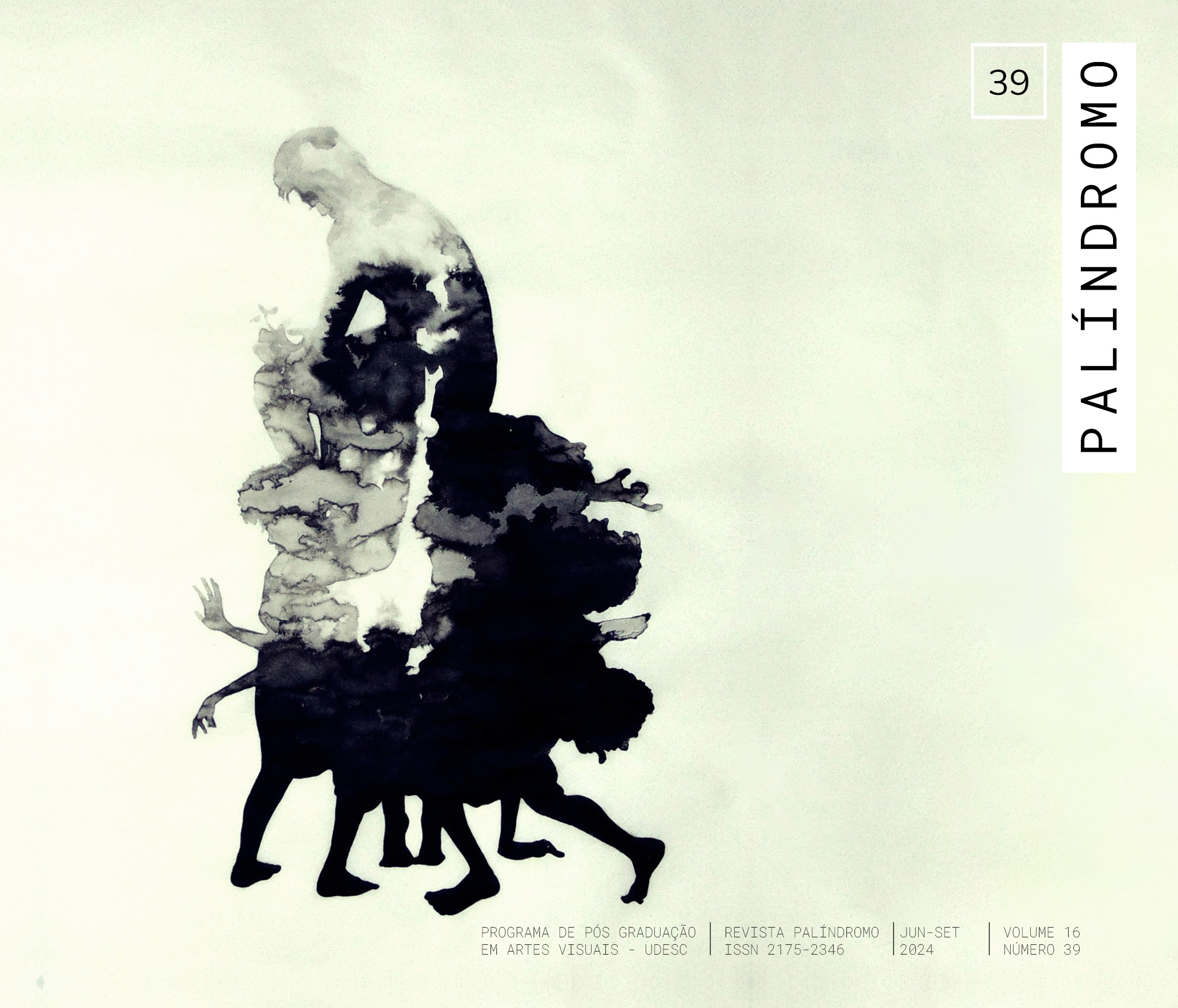The visual fortune of the tragic layers of the romance of the Castellan of Vergy
DOI:
https://doi.org/10.5965/2175234616392024e0004Keywords:
Castelana de Vergy, tragedy, ivory, fresco, Davanzati PalaceAbstract
Tragedy can take on several dimensions in the same story, depending on our understanding. This article seeks to develop a reflection on the visual fortune of the different tragic layers in the story of Castellan de Vergy (written in the first half of the 13th century), which narrated the love of a young couple and the deaths of three of the four characters. The wide circulation of the novel stimulated the production of images on different media. Based on the analysis of a miniature, a metal insignia, an ivory casket and a fresco, this study will address how the episodes represented related both to the novel and dialogued with the community, impacting the construction of relationships within the Pre Modern Societies.
Downloads
References
BOMBE, La Châtelaine de Vergy en Italie. La Bibliofilía, vol. 19, n° 10/12 (Gennaio-Marzo 1918), p. 309-331. Disponível em: http://www.jstor.org/stable/26208349. Acesso em: 12 set. 2022.
BRUNA, Denis. Enseignes de Plomb et autres menues chosettes du Moyen Âge. Préface de Michel Pastoureau. Paris: Éditions du Léopard d'Or, 2006.
BUSHNELL, Rebeca. Series Preface. In: ENDERS, Joy; COLETTI, Theresa; SEBASTIAN, John T e SYMES, Carol. A Cultural History of Tragedy in the Middle Ages. Nova York: Bloomsbury Publishing, 2021.
CAMILLE, Michael. The Medieval Art of Love. Objects and Subjects of Desire. Londres: Laurence King, 1998.
CARRARA, Francesca. Palazzo Davanzati: La sua storia dai Davizzi, ai Bartolini, ai Davanzati. In: TEODORI, Brunella (ed.). Palazzo Davanzati e Firenze. Florença: Edifir-Edizioni Firenza, 2017.
CASTELNUOVO, Enrico. Arte delle cittá, arte delle corti tra XII e XIV secolo. Turim: Giulio Einaudi editore, 2009.
CHIESI, Benedetta. Storie scolpite in avorio: copiare, inventare, narrare. I cofanetti con la storia della castellana di Vergy e alcuni esempi di rilievi eburnei trecenteschi nel Museo Nazionale del Bargello. In: LUONGO, Alberto, et alli. Confronti 2. Medioevo in Formazione. I giovani storici e il futuro della ricerca. Livorno: Debatte Editore, p. 168-181.
DUNLOP, Anne. Painted Palaces. The Rise of Secular Art in Early Renaissance Italy. Filadelfia: The Pennsylvania State University Press, 2009.
FRUGONI, Chiara. La voce delle imagini. Pillole iconografiche dal Medioevo. Turim: Giulio Einaudi Editore, 2010.
FRUGONI, Chiara. Au lit au Moyen Âge. Comment et avec qui. Paris : Les Belles Lettres, 2024.
GABORIT-CHOPIN, Danielle. Ivoires Médiévaux Ve – Xve siècle. Paris: Éditions de la Réunion desmusées nationaux, 2003.
KARRAS, Ruth Mazo. From Boys to Men. Formations of Masculinity in Late Medieval Europe. Filadelfia: University of Pennsylania Press, 2003.
KURZ, Otto. “Julius von Schlosser. Personalità metodo lavoro”. In: SCHLOSSER, Julius von. L’Arte del Medioevo. Turim: Giulio Einaudi Editore, 1989.
LAZZI, Giovanna. Scene d’Amore dal Medioevo: La Storia della Castellana di Vergy. In: TEODORI, Brunella (ed.). Palazzo Davanzati e Firenze. Florença: Edifir-Edizioni Firenza, 2017, p. 39-49.
LUCÍA MEGIAS, José Manuel. Frescos caballerescos y Arturicos en el norte de Italia 1. Tres castillos en los alrededores de Trento. Letras, n. 59-60, 2009, p. 209-230. Disponível em: http://bibliotecadigital.uca.edu.ar/repositorio/revistas/frescos-caballerescos-arturicos-norte-italia.pdf. Acesso em: 19 fev. 2024.
RASMUSSEN, Anne Marie. Medieval Badges. Their Wearers and their Worlds. Filadelfia: University of Pennsylvania Press, 2021.
SAVORELLI, Alessandro. Gli STemmi delle Camere Nuziali dei Davizzi (1350-1361). In: TEODORI, Brunella (ed.). Palazzo Davanzati e Firenze. Florença: Edifir-Edizioni Firenza, 2017. p. 35-37.
WITTHOFT, Brucia. Marriage Rituals and Marriage Chests in Quattrocento Florence. Artibus et Historiae, vol. 3, n° 5, (1982), p. 43-59. Disponível em: https://www.jstor.org/stable/1483143?origin=JSTOR-pdf. Acesso em: 12 mar. 2024.
Downloads
Published
How to Cite
Issue
Section
License
Copyright (c) 2024 Flavia Galli Tatsch

This work is licensed under a Creative Commons Attribution 4.0 International License.
COPYRIGHT STATEMENT
The articles published by the magazine are free to use, intended for academic and non-commercial applications. Copyright is all assigned to the magazine. The articles whose authors are identified represent the expression from the point of view of their authors and not the official position of Palíndromo Magazine. The author (s) commits to whenever they publish material referring to the article published in Palíndromo mention this publication as follows:
This article was originally published by Palíndromo magazine in its volume (place the volume), number (place the number) in the year of (place the year) and can be accessed at: http://www.revistas.udesc.br/index.php/palindromo


